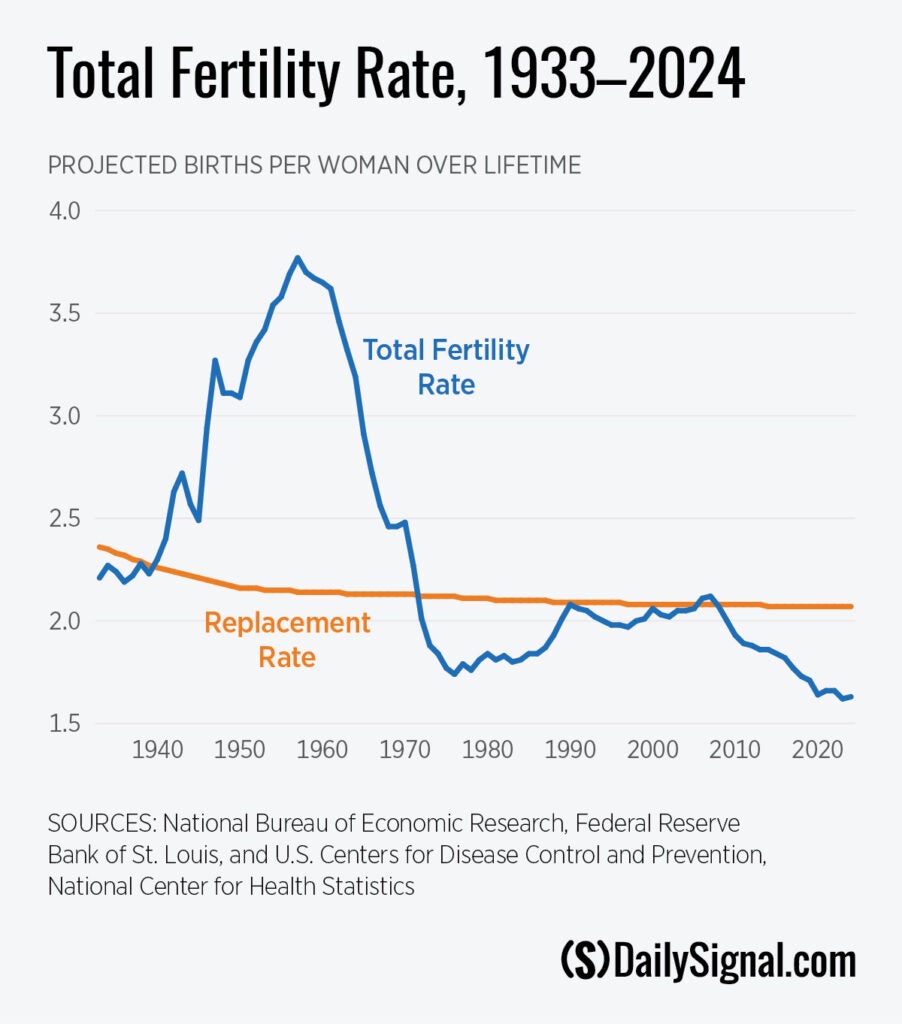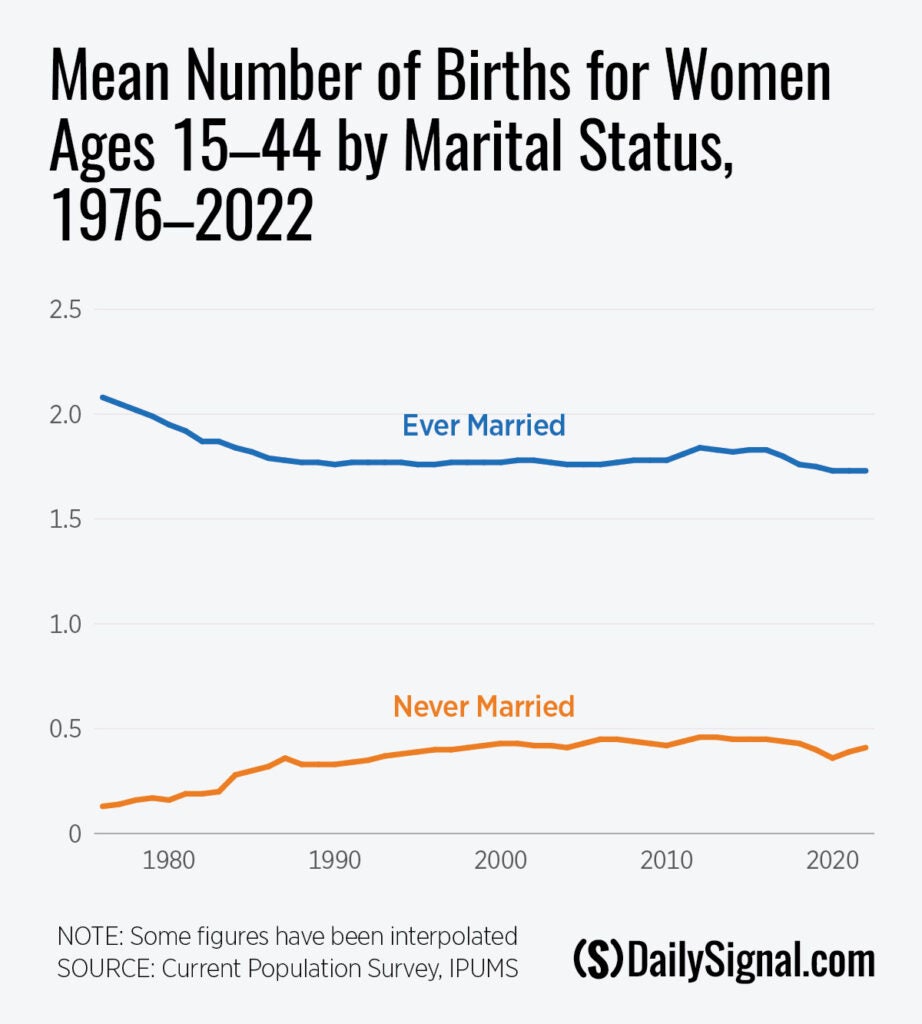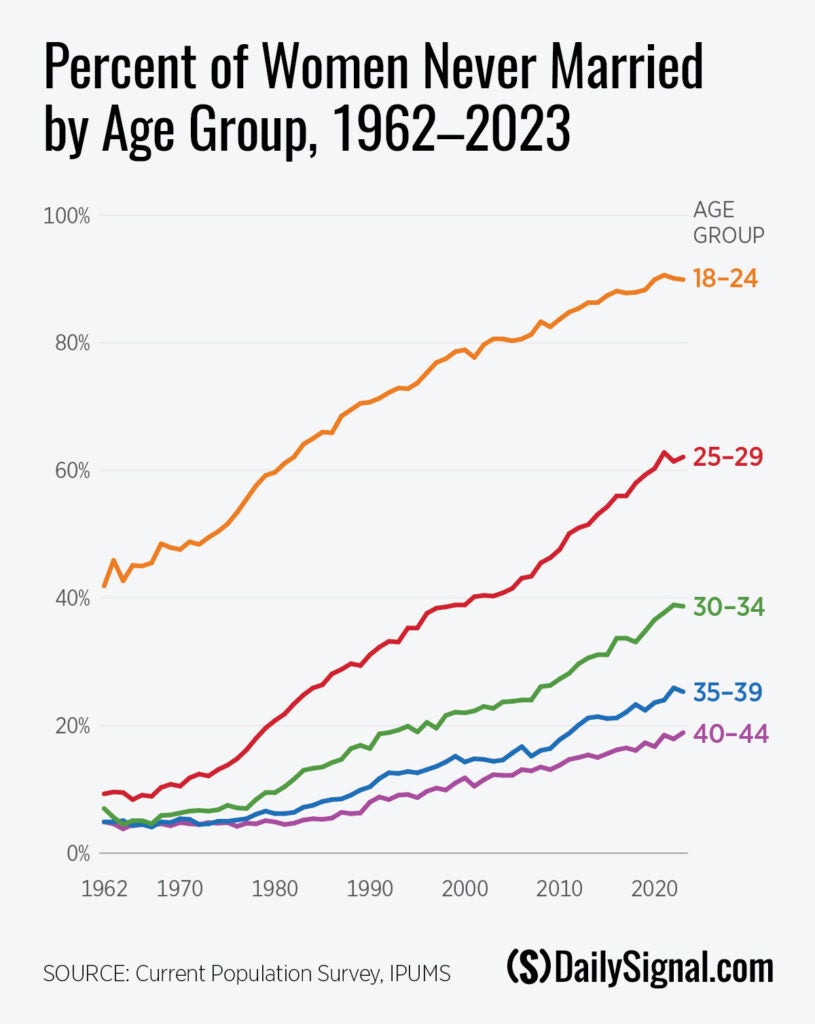Birth Rates Increase Slightly, but Remain Near Historic Low as Marriage and Family Formation Fall
The U.S. birth rate has been on a downward slide since the Great Recession. In 2024, the total fertility rate went up slightly though, but... Read More The post Birth Rates Increase Slightly, but Remain Near Historic Low as Marriage and Family Formation Fall appeared first on The Daily Signal.

The U.S. birth rate has been on a downward slide since the Great Recession. In 2024, the total fertility rate went up slightly though, but still by less than 1 percent. The total projected number of children a woman is expected to have in her lifetime is now 1.63, which is slightly above the 2023 projection, but still well below the replacement rate of 2.1.
The largest increase in births was among women in their 30s, while birth rates among women in their early 20s declined, as did the teen birth rate. An increase in the birth rate is good news, although one year of data is too little to tell if this indicates a shift in the overall trend of declining birth rates the U.S. has seen during the past decade and a half.

A major reason for declining U.S. fertility is the drop in marriage rates. The average number of births to married couples has remained quite steady for decades, but marriage rates have continued to fall. In nearly every year since 1986, the average number of births to married women has been 1.8, although in 2022 it declined to 1.7.

Although birth rates among married women have remained relatively stable, an ever-increasing number of women in their prime childbearing years remaining unmarried.

What are the consequences of declining birth rates?
Declining births mean thinner family networks to provide support to people—fewer siblings, cousins, aunts and uncles, and other extended family. Sibling relationships are often the longest relationships people have in their lifetime, and people often turn to siblings for help during their lives.
The well-being of the elderly is also another major concern when it comes to declining birth rates, as older adults often rely on adult children or younger siblings for help as they age. With declining birth rates, a growing share of Americans are projected to be without any kin to help support them in their advancing years. Declining familial care for the elderly also has implications for government health care programs, as more people will likely turn to government for assistance if informal care is less available.
Americans report a growing sense of purposelessness and loneliness in society today too. But those who are married with children tend to be the happiest, and parents are less lonely and are often more involved in their communities compared to non-parents.
Why marriage has declined is an important question. People often suggest declining economic well-being as the reason for dropping marriage rates, particularly in working-class communities. But this explanation is doubtful, given that incomes of men at the median and at lower income thresholds have not declined, and more men today are able financially to support a family than in past generations when marriage rates were much higher.
Instead, the explanation for declining marriage has more to do with cultural shifts that encourage people to prioritize individual pursuits over marriage and family. This shifts the horizon for marriage increasingly further down the road, and delayed marriage can decrease the likelihood that people marry at all.
Society’s reduced emphasis on marriage is reflected in a 2023 Pew Research Center survey. Only about 20% of parents said that it is extremely or very important that their children get married, and about the same share said that it is extremely or very important that their children have children of their own.
In contrast, about 90% of parents said it is very or extremely important that their children have jobs they enjoy when they grow up, and about the same share said it is extremely or very important that their children are financially independent when they grow up.
In another Pew survey from 2019, nearly two-thirds of respondents said society is just as well off if people have priorities other than marriage and children, an increase from 60% just three years prior.
Relationships today are also less committed. Marriage is no longer a requirement for sexual relationships or for childbearing, and often a committed dating relationship is not even a prerequisite for these things. Having multiple sexual partners during adulthood, living together with a romantic partner without secure plans for marriage, and having children from multiple relationships has become the norm for a substantial share of Americans. These are all factors that can stand in the way of a healthy marriage.
Still, the vast majority of unmarried adults (81%) say they would like to marry.
Young adults need a supportive community to help them build healthy marriages and raise children though. And unfortunately the social scaffolding in many communities that helps young adults build healthy marriages and raise families has eroded, particularly in working-class and lower-income communities.
Civic leaders, policymakers, and families should turn their attention to the growing trend of declining birth rates and declining family formation and seek ways to rebuild marriages and families in their communities. A culture that can foster familial relationships is crucial to building a strong, thriving society.
The post Birth Rates Increase Slightly, but Remain Near Historic Low as Marriage and Family Formation Fall appeared first on The Daily Signal.










